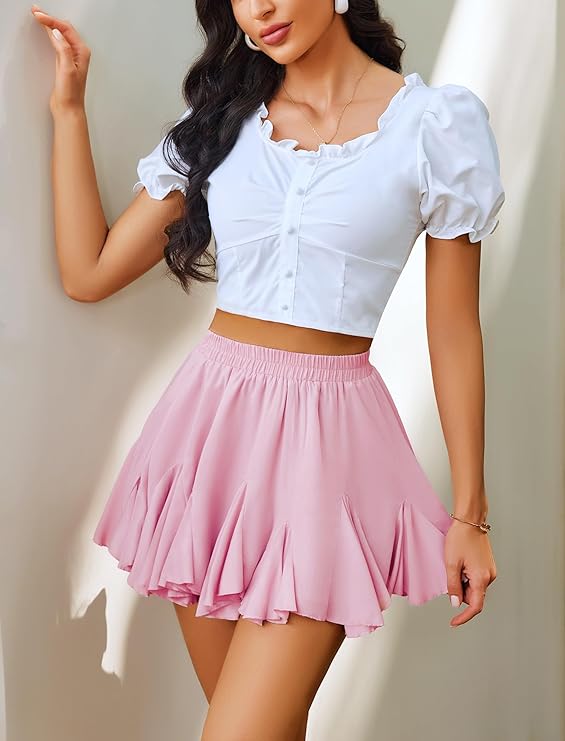The pleated skirt has stood the test of time as a quintessential piece in women’s fashion. With its roots deeply embedded in history, it continues to evolve and influence modern styles. Pleated skirts offer a unique combination of grace, versatility, and comfort, making them a mainstay in closets worldwide. This exploration into pleated skirts will illuminate their historical significance, variety in form and function, and how they have been seamlessly integrated into today’s fashion trends.
The Historical Significance of Pleated Skirts
The Ancient Beginnings and Societal Impact
The pleated skirt’s journey begins in ancient Egypt, where the pleating technique symbolized status and sophistication. Later adopted by the Greeks and Romans, pleats added both function and fashion to garments, aiding movement while showcasing the fine fabrics and intricate workmanship. Across the centuries, pleats have remained a constant, albeit their styles and purposes changing with the times.
In the 18th and 19th centuries, pleats became integral to the elaborate gowns of European aristocracy. The industrial revolution brought about new pleating techniques, which allowed women skirts to become more accessible to the general public. By the early 20th century, pleats had become a symbol of women’s progress, reflecting their quest for practical yet stylish clothing that offered them freedom of movement.
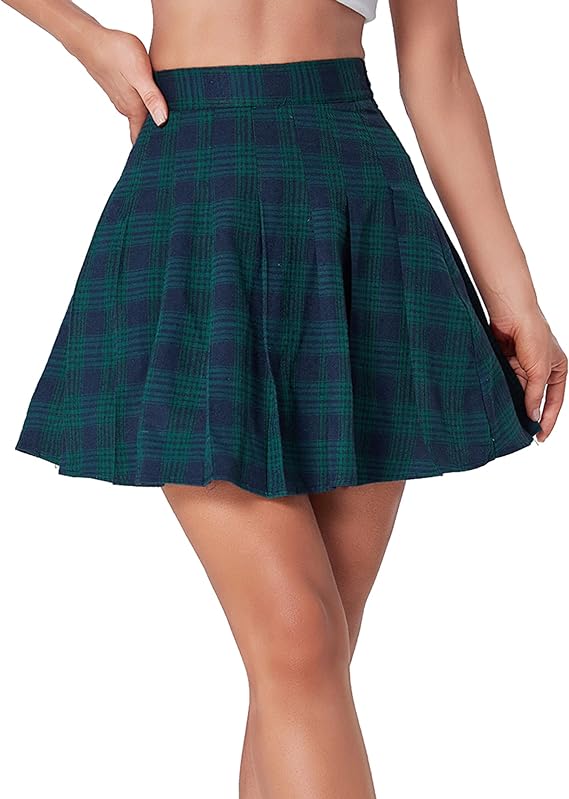
Pleats Through the Ages
From the functionally necessary to the symbolically powerful, the journey of the pleated skirt through history is marked by cultural narrative and aesthetic evolution. The European Middle Ages saw the pleat serve more functional uses, integrated into full-bodied gowns designed for warmth and modesty. The Renaissance reimagined pleating with a focus on opulence and grandeur, reflecting the period’s love for excess and intricacy in its voluminous, pleated dresses that often required support from beneath to hold their shape.
During the Baroque and Rococo eras, pleating techniques became even more sophisticated, culminating in the elaborate designs of palace fashion. Pleats were a canvas for flaunting wealth and status, showcasing luxurious fabrics like silk and intricate patterns woven into or embroidered on them. In the 19th century, the Victorian era embraced pleats for the functional purpose of movement within crinoline-supported skirts, and later, softer, flowing pleats became fashionable as crinolines faded out.
The pleated skirt we recognize today emerged in the 20th century, reflecting the shifting roles and rights of women in society. Pleats became a symbol of liberation, offering ease of movement and simple elegance compared to the restrictive clothing of previous eras. The innovation of machine pleating in the 1920s made pleated skirts more accessible and durable, allowing them to withstand washing without losing their shape. From the tennis courts of the 1920s to the ‘preppy’ look of the 1950s, from the punk scene of the 1970s to the fashion runways of today, pleated skirts have proved themselves to be adaptable and enduring.
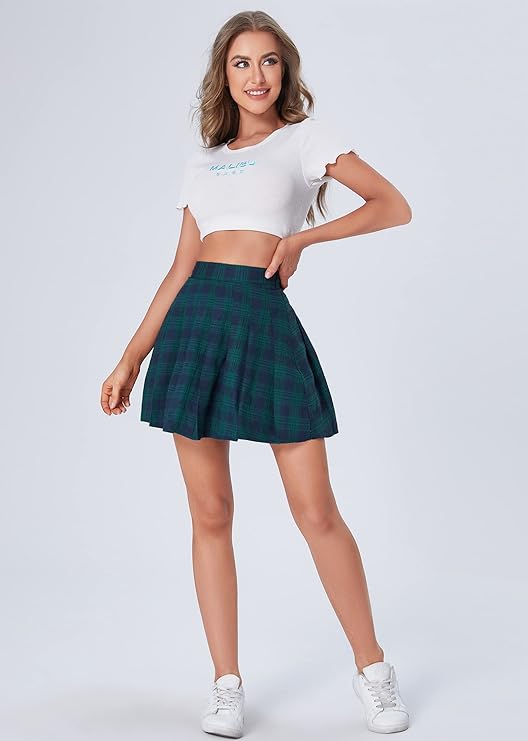
Types and Styles of Pleated Skirts
Exploring Variations of Pleats
Mini skirts encompass a wide range of styles, each defined by the type of pleat they feature. Knife pleats, perhaps the most common type, are characterized by their straight, narrow folds that point down the fabric. This punctilious design offers a clean, vertical line, making it a flattering choice for school uniforms, business wear, or any occasion that calls for a neat, streamlined appearance.
Box pleats create a series of back-to-back folds, resulting in a structured look with added volume. This classic design is often used in skirts where a shape-holding effect is desirable, such as in A-line skirts or cheerleading uniforms. The uniformity of box pleats offers an organized aesthetic, presenting a polished and smart silhouette, ideal for both formal and casual settings.
Accordion pleats are finely pleated, resembling the bellows of an accordion, which create a delightful, zig-zag pattern when the skirt is in motion. They often appear in lightweight fabrics, such as chiffon or georgette, allowing for a flowing, whimsical effect that is perfect for a breezy summer day or a festive evening event. Car wash pleats, on the other hand, are a contemporary variation, featuring distinct panels that resemble the strips of a car wash, hence the name. The split design adds a unique, edgy dynamic to the movement of the skirt, becoming a modern fashion statement.
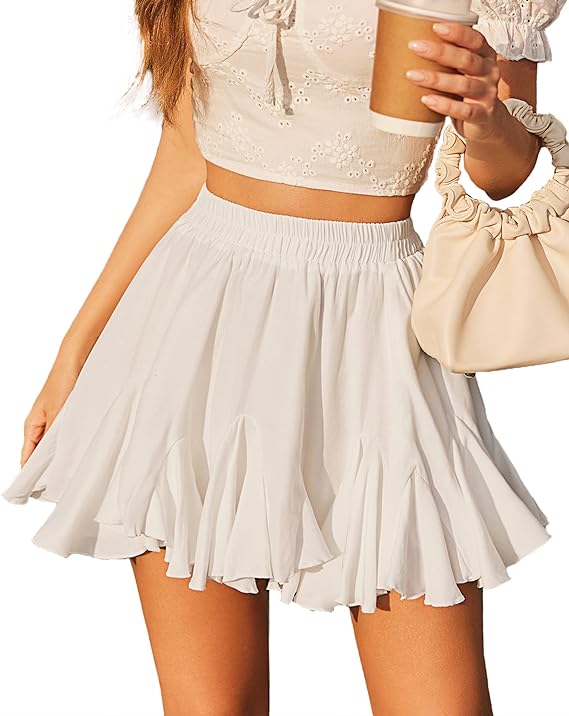
Matching Pleated Skirts with Occasions
The pleated skirt’s adaptability is also reflected in its suitability for a range of occasions. A sharp, micro-pleated skirt, when made from a shimmering fabric, can elevate a party outfit with its texture and luster. In contrast, a longer-length box pleated skirt in a matte fabric serves as the perfect base for a professional, work-appropriate ensemble.
Casual Settings and Everyday Wear
For everyday wear, the pleated skirt offers unmatched versatility. Midi-length skirts with soft, flowing pleats provide a comfortable yet chic option that can be dressed down with a simple t-shirt and sneakers for a day of errands, or elevated with a silk blouse and heels for an evening out. The key to integrating pleated skirts into casual apparel lies in choosing fabrics and colors that blend seamlessly with everyday life, such as cotton blends in neutral or soft pastel shades.
The resurgence of vintage and retro fashion trends has also seen the pleated skirt make a remarkable comeback in casual streetwear. Young fashion enthusiasts have embraced boldly colored or patterned pleated skirts, pairing them with oversized jackets, crop tops, and combat boots to create a look that blurs the lines between nostalgic and contemporary styles. This blend of old and new underscores the pleated skirt’s enduring appeal and adaptability to changing fashion sensibilities.
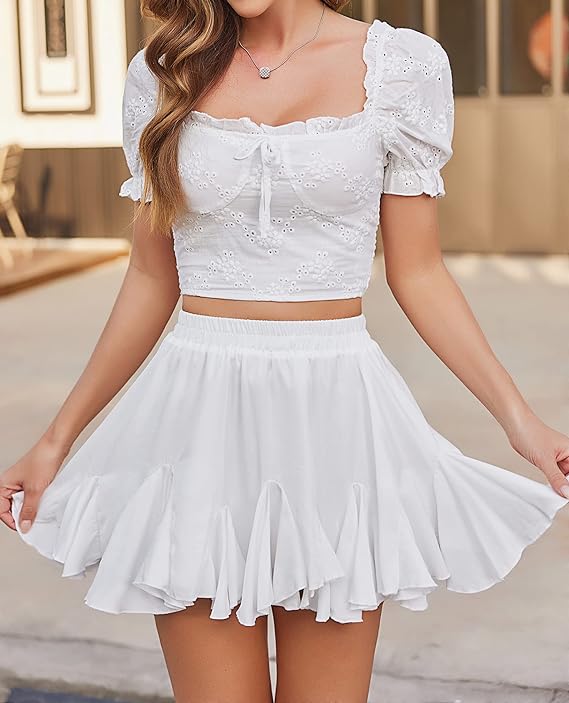
Pleated Skirts in Modern Fashion
The Role of Fabric and Color Trends
In contemporary fashion, the pleated skirt continues to evolve, with designers experimenting with different fabrics and color palettes to breathe new life into this classic garment. The use of unconventional materials, such as leather or metallic fabrics, gives the pleated skirt a modern edge, transforming it from a symbol of demure femininity to one of bold self-expression. The play with colors, from vibrant neons to subtle earth tones, allows for personalization and adaptation to current fashion trends.
Sustainability has also influenced the evolution of the pleated skirt, with an increasing number of designers opting for eco-friendly fabrics and production methods. Biodegradable materials, recycled fibers, and sustainable dyes have become integral to creating pleated skirts that not only look good but also contribute positively to the environment. This shift towards sustainable fashion reflects a broader trend within the industry, with the pleated skirt at the forefront of this movement.
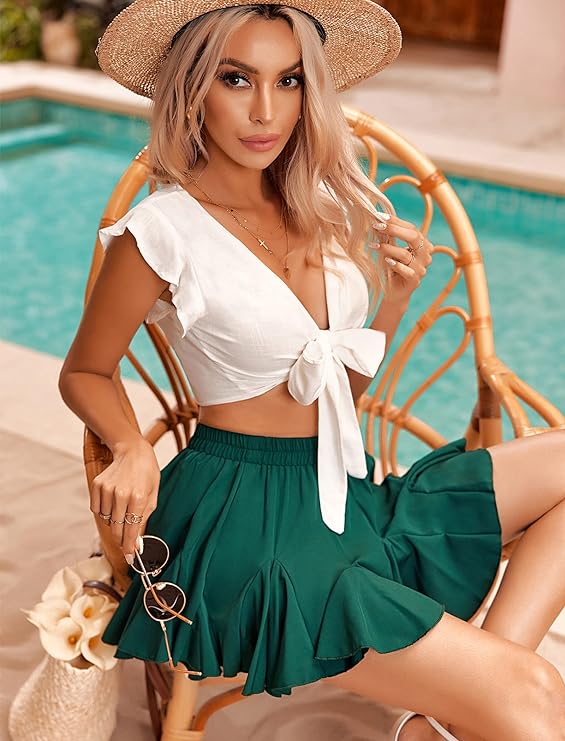
Conclusion: The Timeless Appeal of the Pleated Skirt
The pleated skirt embodies a blend of tradition and innovation, reflecting the dynamic nature of fashion while retaining its timeless appeal. From its ancient origins to its modern interpretations, the pleated skirt has consistently offered a versatile and flattering option for women of all ages and body types. Its evolution through history, adaptability to different occasions, and resonance with current trends underscore its enduring popularity.
As fashion continues to evolve, the pleated skirt remains a testament to the creativity and resilience of design. It stands as a symbol of feminine grace, a canvas for personal expression, and a bridge between the past and the future of fashion. Whether embraced for its practicality, comfort, or aesthetic value, the pleated skirt is more than just a garment; it is a storied piece, carrying within its folds the narratives of those who wear it and the eras it has traversed.
In celebrating the pleated skirt, we acknowledge not only its beauty and versatility but also its power to adapt and thrive. It is a compelling reminder that in the ever-changing world of fashion, some elements remain cherished, resonating across generations and continuing to inspire anew.
